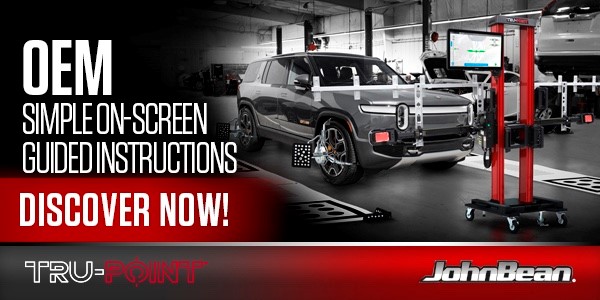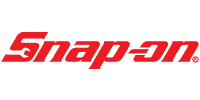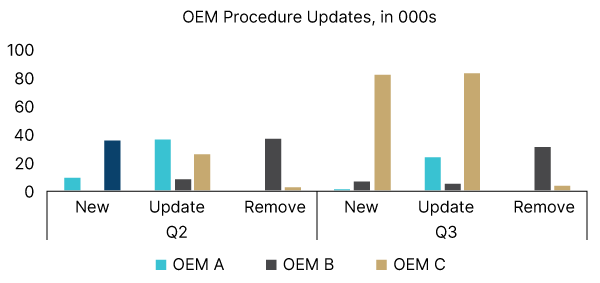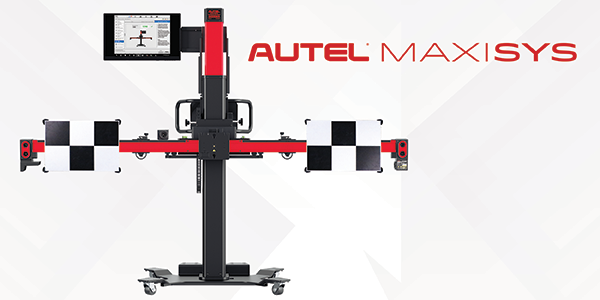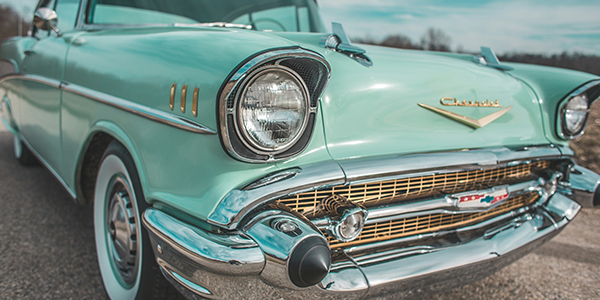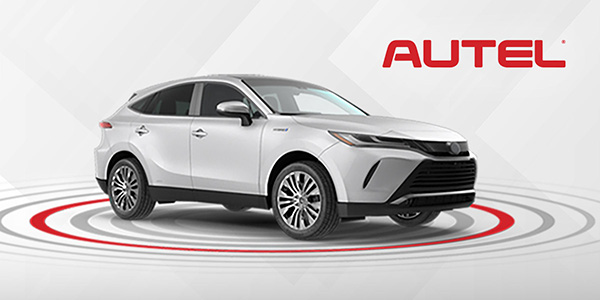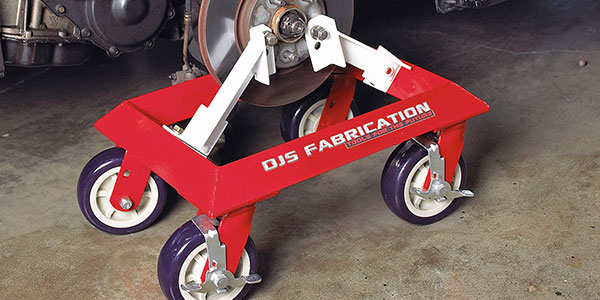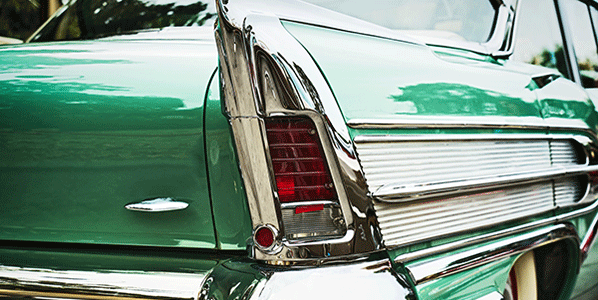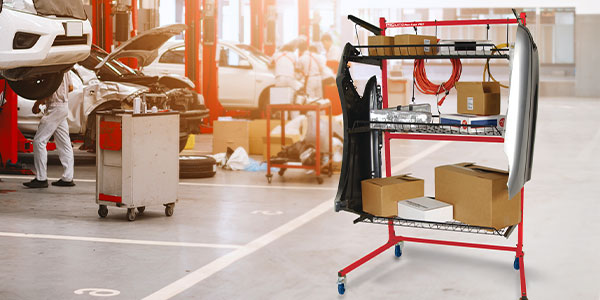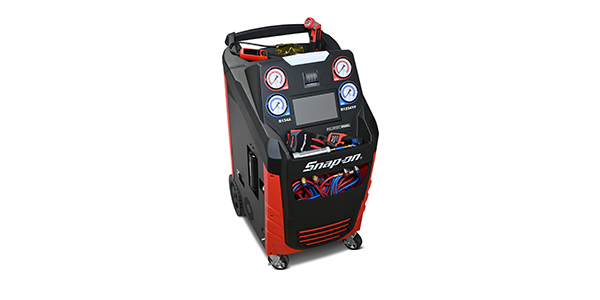Advanced driver-assistance systems (ADAS) are nothing new anymore to collision repair facilities; these systems have been around for longer than most people think. But more and more vehicles are featuring them; in fact, for the 2022 model year, 11 of the top 15 car manufacturers produced over 95% of their vehicles with forward-facing cameras requiring calibration after windshield replacement. Also, 89% of model-year 2023+ vehicles will require a calibration following a windshield replacement, up sharply from only 25% of model-year 2016 vehicles.
Unfortunately, there is widespread misinformation about ADAS calibration throughout the collision repair industry, and many calibrations are either being missed or improperly performed.
“The biggest thing that collision repairers need to understand is WHEN the calibration needs to be done — because right now, the industry is missing about 75% of the calibrations that are needed on average [source: CCC Intelligent Solutions],” says Chris Sobieski, ADAS special projects manager for Snap-on®. “Coincidentally, there’s also a 75% comeback ratio with cars with ADAS [source: IIHS]. Customers are realizing that their car isn’t behaving the way it used to and they’re coming back. Those missing calibrations, just like those missing pre-scans and post-scans, are the no. 1 biggest thing because we can’t keep sending cars out that aren’t fixed correctly.”
Also, many collision repair facilities are not following OEM repair procedures when it comes to calibrations, as there are very specific parameters that must be followed exactly without deviation to ensure a successful calibration.
“When we’re training customers, we preach that step one with any calibration is to look up the service information,” Sobieski says. “Calibration equipment has lots of good information built into it, but the critical part is that they need to have ALL the information built into them. All the information is in that OEM service information.”
An example Sobieski cited is for a Honda vehicle that may require a static calibration immediately followed by a dynamic calibration, but per the service information, you only have 30 minutes to complete that dynamic calibration. So, suppose it’s a rainy, snowy or foggy day where cameras may be blinded by weather or lines in the road covered up. In that case, you won’t be able to complete that calibration — so essentially it was a mistake to start that calibration in the first place.
Reprogramming, reflashing, interpreting DTCs and performing calibrations is complicated stuff for an industry that, for most of its existence, never had to do those things. Equally frustrating is that no one tool or piece of equipment performs all these operations for repairers.
“One of the biggest things we want to make clear with the customer is that there is no 100% solution out there,” says Sobieski. “We’re going to put together the best possible package to fit that particular customer’s car park.”
Sobieski says some calibrations are very rudimentary while others are more complicated. And the aftermarket does not always provide a solution. He cites the example of a Ford azimuth test on a park-assist sensor that requires a device the shop has to build with PVC pipe and toilet bowl flanges.
“Snap-on does not sell PVC pipe and toilet bowl flanges, a home improvement store does. So you’re going to have to start filling in those gaps and build all those things,” says Sobieski. “It’s not high-end calibration equipment but it’s equipment that’s required to be able to do the calibration.”
Of the three options for collision repair facilities to pursue when it comes to scanning, calibration and diagnostics — in-house, sublet or mobile service — Sobieski believes the best option may be different for each shop. A lot of it depends on the specific makes of vehicles a shop sees on a regular basis.
“If your shop does a limited number of Volkswagens and you’re in a metropolitan area, the cost of putting Volkswagen into your package is pretty expensive — and your return on investment may be a very long road to go,” he says. “At that point, you make the recommendation of taking the vehicle to the dealer, but a shop in a rural area where it’s four hours to the Volkswagen dealer maybe needs to make that investment. We want to sit down with that customer and spend the time to do an extensive needs analysis based upon their car park, business and specialties.”
Diagnostics is a very specific skillset, and some collision repair facilities may not have a technician with the kind of electronic aptitude needed to calibrate vehicles or learn how to calibrate vehicles. Snap-on has solved that issue by building a natural intuitiveness into the software of their ADAS equipment so almost anyone can operate it.
“The software is very intuitive and will guide a technician step-by-step,” Sobieski says. “In the case of the John Bean® Tru-Point™ One-Stop Calibration Solution, it will actually evolve itself into that manufacturer’s calibration procedure.”
To illustrate how simple it is to operate the Tru-Point, Sobieski relates a story about how Snap-on ran a Tru-Point challenge at the recent SkillsUSA competition in Atlanta. Three post-secondary students and two high school students who finished in the top five in the competition were able to complete a Toyota windshield calibration in an average time of about nine minutes by just following the prompts on the screen of the Tru-Point and letting the software guide them through the process.
In a crowded marketplace, Tru-Point stands out because Snap-on practically invented three-dimensional image technology for alignments and has been doing it for 25 years.
“Every alignment machine that you see in the marketplace today uses that technology,” Sobieski says. “The other competitors out there do have cameras on their system to position the frame for windshield calibration, but when they get to doing radar calibration, blind spot calibration, 360 calibration or any of the others, you’re back to doing it manually with lasers and tape measures. The Tru-Point uses image technology, stepping the technician through the process, putting all the targets in the right spot and documenting that the job was completed correctly. And if the target gets moved or bumped out of place, Tru-Point is always checking to make sure that everything is correct and it will back up two steps and make you correct it before you can go forward. So now you’ve eliminated tolerance stacking, which is going to lead to a calibration failure or poor calibration.”
Something that may not get talked about enough is target board sizing. Sobieski says the automotive engineers have put a lot of design and testing into them, and there’s a reason why those targets are being placed at a certain distance.
“That camera is looking through that curved piece of glass, which has certain optics and laminate, and it needs to be able to focus and optimize on that image at that distance,” he says. “Some other equipment manufacturers have decided to shrink that target and bring it closer to the vehicle, thinking that by doing so they’re still getting a quality calibration with less space requirements. With the Tru-Point, we honor the OEM procedure and target size. If the manufacturer says that the target needs to be at a certain size and six meters in front of the car, that’s where we’re going to place it. Suppose something bad happened, the vehicle got into another accident and the shop owner was accused of not fixing the car right. In that case, he will have to prove that he followed the OEM’s step-by-step procedures and did everything he could possibly do to repair that vehicle the correct way.”
Sponsored by Snap-on.

